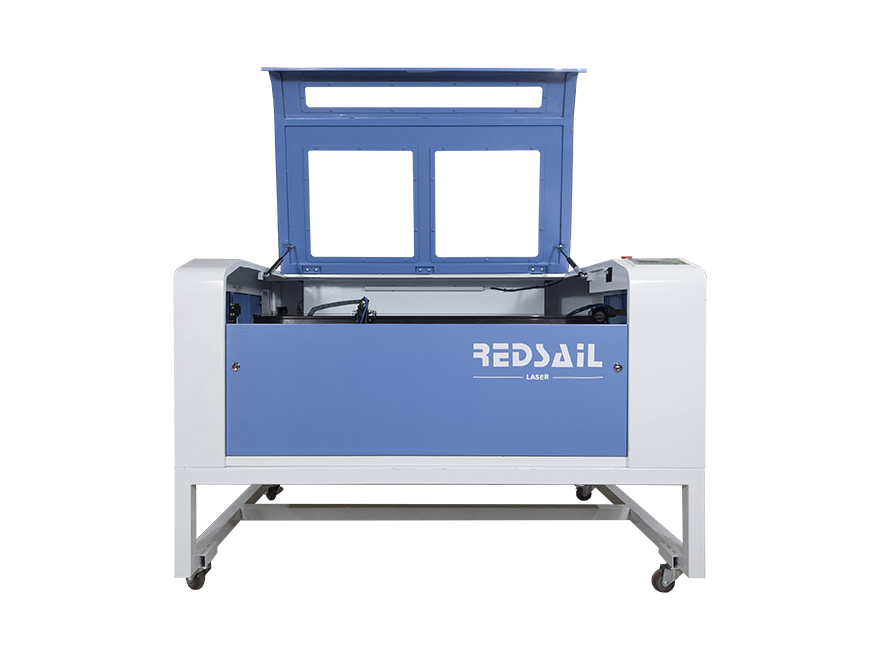How Does a CO2 Laser Cutter Work? Decrypting its Astonishing Mechanism!
A CO2 laser cutter is an advanced tool used in various industries for precise and efficient cutting of different materials. From industrial manufacturing to small-scale workshops, these machines have become a crucial part of the cutting process. But have you ever wondered how a CO2 laser cutter actually works? In this article, we will delve into the mesmerizing mechanism behind this remarkable cutting technology.
Understanding the Basics of a CO2 Laser Cutter
Before diving into the intricate details, let’s grasp the fundamentals of a CO2 laser cutter. CO2 lasers are classified as gas lasers, which utilize carbon dioxide gas as the primary laser medium. These lasers emit a high-energy beam of light that can cut through or engrave a wide range of materials such as wood, acrylic, leather, and even metals.
The Components of a CO2 Laser Cutter
A CO2 laser cutter consists of several key components that work together to achieve precise and controlled cutting. Understanding the role of each component is vital to deciphering the overall functioning of the machine. Here are the primary components:
1. Laser Tube:
The laser tube is the heart of the CO2 laser cutter. It contains a high-pressure mixture of gases, including CO2, nitrogen, helium, and trace amounts of other gases. When an electric current is passed through the tube, it excites the gas molecules, leading to the emission of photons.
2. Optics System:
The optics system of a CO2 laser cutter is responsible for directing and focusing the laser beam onto the workpiece. It consists of mirrors and lenses that manipulate the laser beam path and control its intensity and focus.
3. Power Supply:
The power supply provides the necessary electrical energy to excite the gas molecules within the laser tube. It ensures a stable and consistent flow of current to maintain a continuous laser beam during the cutting process.
4. Cooling System:
As the laser tube generates intense heat during operation, a cooling system is essential to prevent overheating and ensure the longevity of the machine. Most CO2 laser cutters employ water-cooling systems to maintain optimal temperature levels.
The Laser Cutting Process
Now that we have a fair understanding of the components, let’s explore the laser cutting process in detail:
1. Generating the Laser Beam:
When the CO2 laser cutter is activated, the power supply sends a high-voltage electrical current to the laser tube. This current excites the gas molecules, causing them to release energy in the form of photons. These photons bounce between the mirrors within the tube, continually amplifying and gaining energy until they escape through a partially transparent mirror at one end of the tube, forming a powerful laser beam.
2. Guiding and Focusing the Laser Beam:
Once the laser beam is generated, it travels through the optics system, which includes mirrors and lenses. The mirrors are used to reflect and manipulate the direction of the beam, while the lenses focus and shape the beam, allowing it to concentrate heat onto a small spot.
3. Cutting the Material:
As the focused laser beam reaches the workpiece, it heats the material intensely, vaporizing or melting it along the predefined cutting path. The laser beam moves rapidly across the material, following the cutting pattern specified by a computer numerical control (CNC) system. The intense heat melts away the material, creating a clean and precise cut without physical contact.
FAQs
Q1: What are the advantages of using a CO2 laser cutter?
A1: CO2 laser cutters offer several advantages such as high precision, fast cutting speeds, versatility (suitable for various materials), low maintenance requirements, and the ability to engrave intricate designs.
Q2: Can a CO2 laser cutter cut through metal?
A2: While CO2 lasers are primarily used for cutting non-metal materials, they can also cut thin metal sheets. However, for thicker metals, more powerful lasers like fiber lasers are preferred.
Q3: Are CO2 laser cutters safe to use?
A3: CO2 laser cutters can be safe if operated properly and with the necessary safety precautions. It is crucial to wear appropriate protective gear, have proper ventilation, and follow the manufacturer’s guidelines to ensure the safe operation of the machine.
Q4: What types of industries use CO2 laser cutters?
A4: CO2 laser cutters find applications in various industries, including manufacturing, automotive, aerospace, architecture, signage, fashion, and crafts. They are also commonly used in educational institutions and research laboratories.
Q5: Is maintenance required for a CO2 laser cutter?
A5: Yes, regular maintenance is required to keep a CO2 laser cutter in optimal condition. This includes cleaning the optics, ensuring proper alignment, checking the cooling system, and replacing worn-out components when necessary.
Conclusion
A CO2 laser cutter is a remarkable tool that operates on a fascinating mechanism. By harnessing the power of carbon dioxide gas, these machines offer precise and efficient cutting capabilities across a wide range of materials. Understanding their components and the laser cutting process enables us to appreciate the astonishing technology behind CO2 laser cutters.





